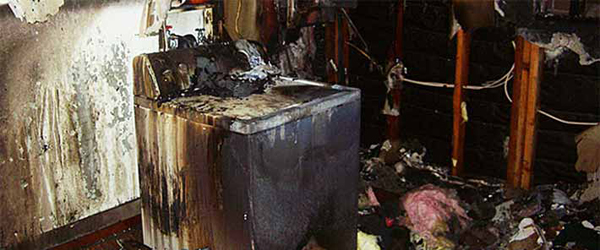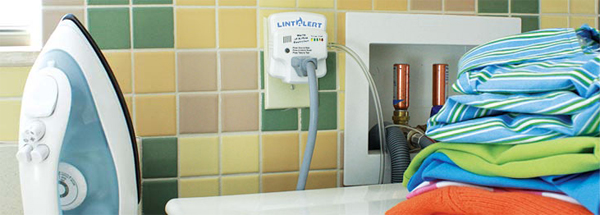
LintAlert helps prevent against or alert to
all of these problems below!!
Clogged Dryer Vent Syndrome

Proper dryer venting is much more important than most homeowners realize. Considering the stakes involved and the frequency of residential dryer fires, the topic of dryer venting deserves more attention than it gets.
A quick look behind just about any dryer can be illuminating. In most cases, the flexible duct (transition hose) is going to have multiple bends. In situations that can be very dangerous, the exhaust hose can be crushed against the wall. Add lost socks, an empty fabric softener box and a considerable accumulation of lint dust and this very real fire hazard becomes obvious.
All this is before looking inside the wall or at the exhaust system’s outside termination. Inside the wall, long duct runs with many elbows increase the rate of lint accumulation in the duct and in the dryer itself. Inefficient dryer vent terminations that are all too common also contribute to the problem.
While we strongly recommend that the lint screen be cleaned before every load, the fact is that lint still makes it past the filter. There are many reasons lint builds up in every dryer system. Some you can see. Some you can’t.
Fact! These Five Conditions Promote Lint Build-Up In Your Dryers’ Exhaust Duct.
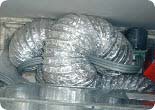 Duct Run May Be Restrictive or Excessive
Duct Run May Be Restrictive or Excessive
New construction trends are placing laundry rooms in nontraditional areas of the house, further away from exterior walls than in the past. These locations require longer dryer duct runs and more elbow fittings in order to reach an outside wall.
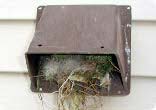 Bird and Rodent Nests in the Vent Hood
Bird and Rodent Nests in the Vent Hood
In some parts of the country, birds, rodents and insects build nests within the exterior termination hood.
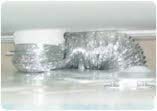 Flex Hose Crushed or Kinked Excessively
Flex Hose Crushed or Kinked Excessively
The transition hose behind the dryer tends to get crushed or kinked excessively when the dryer is moved back, either inadvertently or by vibration. This kink or partial blockage drastically reduces the unit’s ability to efficiently vent the air.
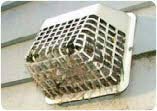 Vent Hood with Screen-Like Features
Vent Hood with Screen-Like Features
It’s not uncommon to find an exhaust termination hood or vent that is not specifically for dryer venting or that has some sort of lint catching grill or screen feature. Even so, dryer specific vent hoods require an inspection and regular cleaning, as they too get debris buildup.
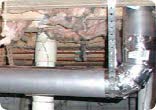 Condensation within the Conduit Duct
Condensation within the Conduit Duct
Running the exhaust system through an un-insulated area like a crawl space or attic in cold northern regions may cause condensation within the pipe. Wet surfaces within the pipe attract and promote accumulation of lint to the duct walls.
Summary
A clean, unobstructed dryer vent improves the safety and efficiency of your dryer. As the dryer vent becomes obstructed and filled with lint, drying time increases and causes the dryer itself to overheat. Likewise, this prevents the adequate removal of air and moisture from the dryer, and a typical 40 minute cycle turns into an hour and 40 minute cycle, resulting in a waste of energy, additional clothes fibers lost and the frightening possibility of a fire. Clothes dryers are one of the most expensive appliances in your home to operate. The longer they run, the more money they cost you.
Problems from clogged dryer vents can be prevented. Regularly check the inside of the dryer and the dryer exhaust system vents. Continually monitoring dryer vent airflow with a LintAlert can help improve home safety by providing reminders when the system needs to be cleaned and alerts when there is a suddend clog or restriction.
